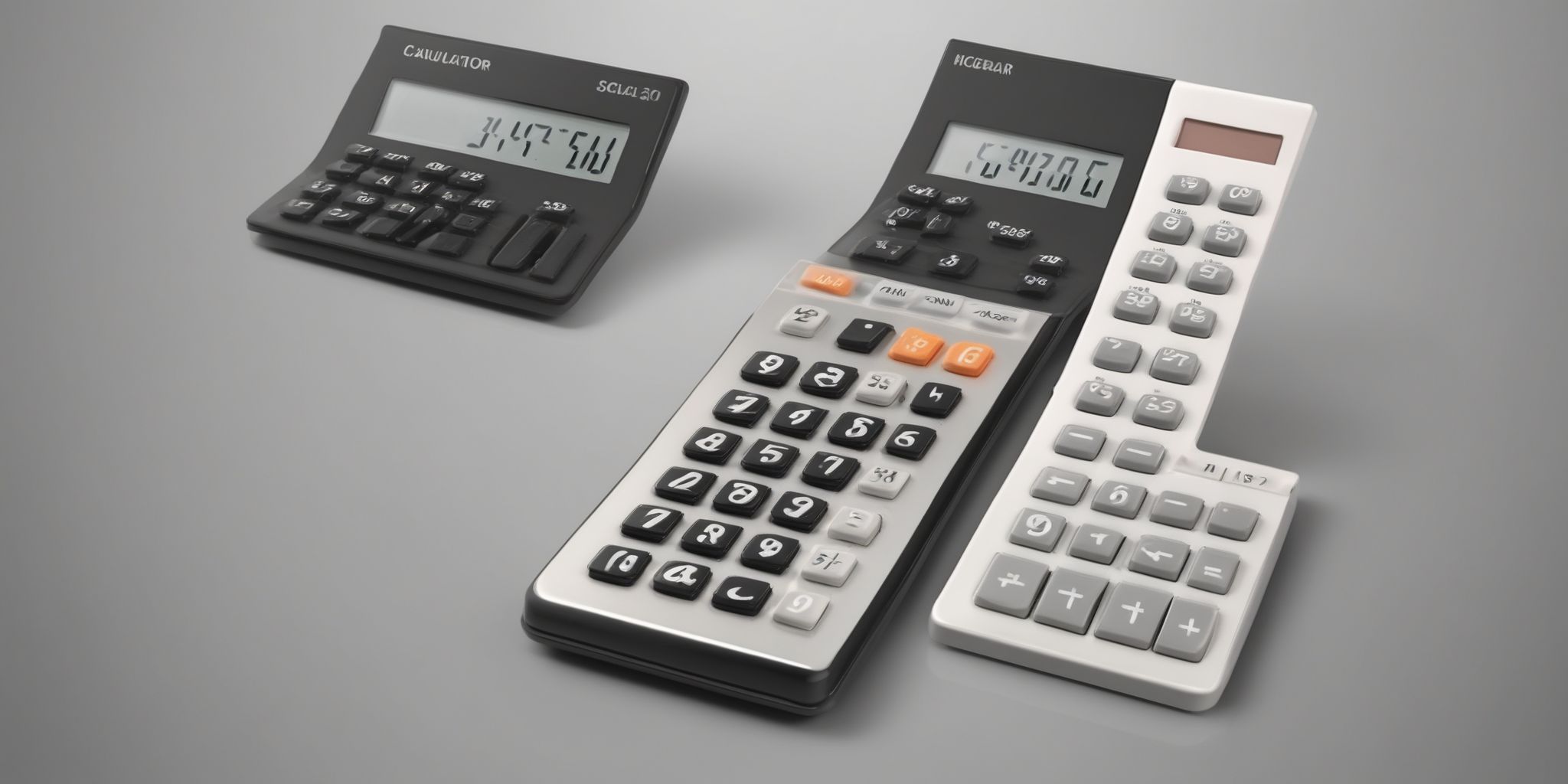How to stick to a budget
Are you looking to take control of your finances and work towards your savings goals?
Budgeting is the key!
By allocating your income to expenses, tracking every penny, and making necessary adjustments, you can stick to your budget and achieve financial success.
From setting realistic goals to planning meals and using cash for purchases, there are various strategies to help you stay on track.
Remember, occasional budget slip-ups are normal, but staying disciplined is crucial.
So dive in and start managing your finances like a pro!
Overview of Budgeting
Make a Budget and Stick to It
Creating a realistic budget involves:
- Calculating income
- Categorizing expenses
- Setting spending targets
- Regularly reviewing the budget
By tracking every expense and adjusting spending targets, individuals can ensure their budget meets their needs and wants.
Strategies to maintain financial discipline include:
- Starting small
- Using budgeting apps
- Automating savings
To stick to a budget, individuals can:
- Pay with physical money
- Plan meals
- Avoid impulse buys
- Involve an accountability partner
Tools like spreadsheets, envelope systems, and budgeting apps help track expenses and manage budgets effectively.
Key components of effective budgeting include:
- Budget categories
- Realistic budget lines
- Setting money aside for savings and investments
Regular budget meetings and seeking advice from a budget coach or financial advisor can help achieve financial freedom and debt repayment.
Think Weekly, Budget Monthly
Effective financial planning involves thinking weekly and budgeting monthly. Breaking down expenses into weekly increments helps manage budget lines and stay on track with financial goals.
Setting up a zero-based budget, where every dollar is assigned to expenses, savings, or debt repayment, prioritizes financial needs over wants. This method encourages setting money aside for emergencies or savings.
Using a budgeting app or the envelope system helps track expenses and stay within budget. Planning meals and creating a grocery list can prevent impulse buys and overspending.
Understanding financial priorities and seeking advice from a budget coach or financial advisor can lead to financial freedom and personal development.
Set Up Your Budget to Zero
Setting up a budget to zero can help with financial planning. It ensures that every dollar of income is allocated to specific budget lines. This method, called zero-based budgeting, involves assigning each dollar to expenses, savings, or investments, leaving no money unallocated.
By planning ahead and setting money aside for needs, wants, and savings goals, individuals can avoid overspending and effectively prioritize their financial goals. Tracking expenses diligently and regularly reviewing the budget are important to ensure all income is allocated within the budget and to make necessary adjustments.
Using tools like budgeting apps or the envelope system can help categorize expenses, track spending, and stay within budget percentages set for each category. Moreover, having an accountability partner, like a budget coach or financial advisor, can offer guidance and support in sticking to the budget.
Tips for Sticking to Your Budget
Automate Your Savings with Auto Draft
Automating savings with auto draft involves transferring a set amount of money automatically from income to a savings account. This helps individuals save consistently without manual deposits.
To set up auto draft, individuals can contact their bank to schedule transfers from their checking account to their savings account.
Benefits of using auto draft for savings:
- Helps meet savings goals every month without spending elsewhere.
- Encourages saving before other expenses, promoting disciplined budgeting.
- Eliminates the need to remember manual deposits, simplifying the process and reducing neglect.
Pay Yourself First
When creating a budget, individuals can prioritize paying themselves first.
This means setting money aside into a savings or investment account before allocating funds to other budget lines.
Practical steps to ensure paying oneself first include:
- Automating savings deposits each month
- Separating needs from wants to prioritize savings
- Using a budgeting app to track every expense
- Staying accountable to financial goals
By adopting the "pay yourself first" mentality, individuals can see benefits such as:
- Building an emergency fund for unexpected expenses
- Working towards financial freedom
- Focusing on debt repayment
This approach helps create a realistic budget where savings are a priority.
It leads to personal development in financial literacy and stability in the long run.
Incorporating the concept of paying oneself first encourages individuals to focus on their financial goals.
It helps set clear boundaries for spending, ultimately contributing to a secure financial life.
Lower Credit Card and Debt Payments
Individuals can take several steps to lower credit card and debt payments:
- Set specific goals in their budget to allocate income towards debt repayment.
- Categorize expenses and set spending targets to prioritize paying off debts.
- Use a budgeting app or spreadsheet to track expenses and ensure funds go towards debt reduction.
- Consider setting up a separate savings account for debt repayments or a physical/digital envelope system for debt payments.
When structuring a budget to prioritize reducing credit card and debt payments:
- Outline monthly income and list all expenses, including debt repayments, as fixed budget items.
- Treat debt repayment as a non-negotiable expense to ensure income goes towards paying off debts before discretionary spending.
- Use zero-based budgeting to align financial goals with budget categories, emphasizing debt reduction as a priority.
Individuals have access to tools and resources to help lower credit card and debt payments:
- Seek advice from financial advisors or budget coaches for personalized debt repayment strategies.
- Use budgeting apps with features for tracking spending, setting budget percentages, and analyzing monthly expenses.
- Set up automatic savings deposits for debt repayment and create an emergency fund for unexpected expenses.
- These steps can contribute to a more stable financial situation.
Engage in No-Spend Challenges
Engaging in a no-spend challenge can help improve budgeting habits.
Committing to not spending money for a set period allows individuals to:
- Reassess needs versus wants
- Prioritize budget lines
- Set money aside in savings
Tracking expenses effectively during the challenge can be done using a budgeting app or the envelope system with physical money.
To succeed, individuals can:
- Plan meals
- Make a detailed grocery list
- Avoid impulse buys by focusing on financial goals
Having an accountability partner or budget coach for support and motivation is beneficial.
The benefits of a no-spend challenge include:
- Building an emergency fund
- Paying off debts
- Saving for future goals
- Gaining financial freedom
Engaging in this challenge encourages personal development by practicing discipline and self-control in financial decisions.
Do Your Grocery Shopping Online
Online grocery shopping has many benefits for sticking to a budget and financial goals. When shopping online, individuals can create a structured grocery list with specific budget lines for each item. This helps avoid impulse buys that can derail financial plans.
Using a budgeting app to plan meals and track monthly budgeted expenses can further help in staying within financial limits. Online shopping also allows users to see the total amount before checking out, reducing the risk of overspending.
Allocating a set amount from a bank account or credit card account for groceries makes it easier to set money aside for quality items rather than wants. Digital envelopes or the envelope system can help individuals stay organized, prioritize needs over wants, and prevent overspending.
Practical Strategies for Budgeting Success
Compare Brands and Prices
When comparing brands and prices, consumers should consider factors such as the quality of the product, the reputation of the brand, and any additional fees associated with the purchase.
Consumers can effectively compare prices by conducting research online, visiting multiple stores, and utilizing budgeting apps to track prices over time.
Researching online reviews and ratings can provide valuable insights into the product's performance and customer satisfaction, helping consumers make informed decisions.
By setting money aside for purchases, creating budget lines for specific needs and wants, and implementing strategies like the envelope system for physical money or digital envelopes for online purchases, individuals can stay within their budget and avoid impulse buys.
Additionally, planning meals and social activities in advance can help in budgeting for groceries and entertainment expenses.
By following these budgeting techniques and staying accountable to their budget, consumers can work towards their financial goals and achieve financial freedom.
Treat Yourself Occasionally
Individuals can stick to their budget while still treating themselves by following these simple steps:
- Set aside a specific amount in the budget for treats.
- Balance budget categories for needs and wants.
- Use budgeting apps or the envelope system to track expenses.
- Plan ahead by setting money aside in digital or physical envelopes.
- Choose quality over quantity for indulgences.
- Seek support from an accountability partner or budget coach.
- Make conscious decisions and stay disciplined to prioritize financial goals.
Make Day-to-Day Banking Easier
Automated savings tools make banking easier by moving money from income to a savings account automatically.
Setting up these deposits helps individuals save effortlessly for their goals without manual transfers. This makes saving a priority without constant monitoring.
Budgeting apps with features like digital envelopes allocate funds to specific budget lines like savings, expenses, and needs.
Being organized with set budget percentages can simplify banking and money management.
Having an accountability partner or budget coach offers support in making money decisions, leading to financial freedom and improved banking.
FAQ
How can I create a realistic budget?
To create a realistic budget, track your expenses, identify your income, set financial goals, and make adjustments as needed. Use budgeting tools like Mint or YNAB, and allocate specific amounts for different categories such as groceries, bills, and savings. Review and update your budget regularly.
What are some tips for tracking my expenses to stick to a budget?
Some tips for tracking expenses to stick to a budget include using budgeting apps like Mint, keeping receipts, creating spending categories, and reviewing your budget regularly. Tracking expenses can also be done manually by using a spreadsheet or a simple notebook.
What should I do if I go over budget in a certain category?
Evaluate where you can make cuts in other categories to balance out the overage. For example, limit dining out to save money for going over budget on clothing. Adjust your budget for the following month to prevent overspending in the future.
How can I stay motivated to stick to my budget?
Track your progress regularly, set specific financial goals, create a visual reminder, and reward yourself for hitting milestones. For example, use a budgeting app to monitor spending, aim to save a certain amount each month, put up a vision board with your goals, and treat yourself to a small reward for staying on track.
What are some potential consequences of not sticking to a budget?
Some potential consequences of not sticking to a budget include overspending, accumulating debt, missing savings goals, and financial stress. For example, continuously overspending on non-essentials can lead to a lack of funds for important expenses like rent or bills.


